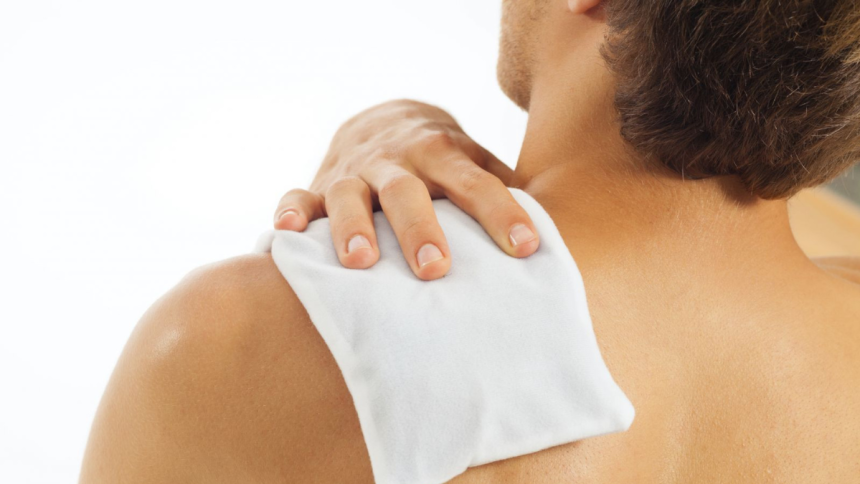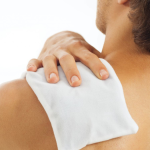If you’ve ever reached for an ice pack after a tough workout or a heating pad for a stiff neck, you’ve already tapped into the power of temperature therapy. Heat and cold treatments are among the simplest, most accessible ways to manage muscle and joint pain—and they’ve been used for centuries to promote healing, reduce inflammation, and ease discomfort.
But how do you know when to use heat versus when to use cold? And can combining the two offer even more relief? Let’s break it all down so you can apply these therapies safely and effectively.
Why Use Heat or Cold for Pain?
Muscle and joint pain can stem from a wide range of causes: overuse, injury, arthritis, stress, or poor posture. Heat and cold therapies work by influencing blood flow, inflammation, and the nervous system’s response to pain. Each method serves a different purpose—and knowing which to use can make all the difference in how fast you recover.
Cold Therapy (Cryotherapy)
Cold therapy is typically the go-to for acute pain or recent injuries. It works by constricting blood vessels, which reduces blood flow to the affected area. This helps minimize swelling, inflammation, and tissue damage. It also numbs the area, offering temporary relief from sharp or throbbing pain.
Common Uses:
- Recent sprains or strains
- Swollen joints
- Inflammation from overuse (e.g., after a workout)
- Minor burns
- Acute injuries (within the first 48 hours)
How to Apply:
- Cold packs or gel packs: Easy to use and mold to the body
- A bag of frozen vegetables: A simple at-home solution
- Cold compresses: Soak a towel in cold water and apply
- Ice massage: Rub an ice cube or frozen cup over sore muscles
Tips:
- Always place a cloth between your skin and the cold source to prevent frostbite
- Limit each session to 15–20 minutes
- Wait at least an hour before reapplying
Heat Therapy (Thermotherapy)
Heat therapy works in the opposite way. It dilates blood vessels, increasing circulation and helping oxygen and nutrients reach damaged tissue. This helps soothe stiffness, relax tense muscles, and promote healing. Heat is best for chronic pain or stiffness, rather than fresh injuries.
Common Uses:
- Chronic muscle pain
- Joint stiffness from arthritis
- Tension headaches
- Menstrual cramps
- Old injuries that are no longer inflamed
How to Apply:
- Heating pads: Easy to control temperature and apply to targeted areas
- Warm towels or compresses: A moist heat option that penetrates deeper
- Hot water bottles: Great for use in bed or under blankets
- Warm baths or showers: Full-body relaxation for general soreness
Tips:
- Don’t use heat on new injuries, open wounds, or areas with swelling
- Limit sessions to 15–30 minutes
- Use a moderate temperature to avoid burns—warm, not hot, is ideal
When to Use Which?
Still not sure whether to grab an ice pack or a heating pad? Here’s a simple rule of thumb:
| Condition | Best Therapy |
| New injury (under 48 hrs) | Cold |
| Swelling or inflammation | Cold |
| Muscle stiffness | Heat |
| Chronic joint pain | Heat |
| Post-workout soreness | Cold, then heat |
| Stress tension (neck, shoulders) | Heat |
Combining Heat and Cold: Contrast Therapy
In some cases, alternating between heat and cold—known as contrast therapy—can be particularly effective. It’s often used in sports recovery or physical therapy to reduce inflammation while also promoting circulation and flexibility.
How to Try It:
- Apply cold for 10 minutes
- Switch to heat for 10–15 minutes
- Repeat the cycle once or twice
- Always end with cold if your goal is to reduce swelling
Contrast therapy is best for post-exercise muscle fatigue, old injuries, or generalized joint stiffness. Just avoid using it on fresh injuries where cold alone is more appropriate.
Safety Considerations
While heat and cold therapies are generally safe, a few precautions are important:
- Don’t use heat or cold for too long—stick to recommended durations
- Avoid extreme temperatures—burns and frostbite are real risks
- Always use a barrier between your skin and the source
- Consult a doctor if you have circulatory issues, diabetes, or nerve damage
- Monitor children and elderly individuals carefully during treatment
And if you’re ever unsure about the cause of your pain or whether a therapy is safe for you, always check here (with your doctor or trusted medical source) before starting a new self-treatment routine.
Final Thoughts
Heat and cold therapy aren’t just old-school remedies—they’re rooted in real science and remain a reliable, low-cost way to manage pain without medication. Whether you’re recovering from a tough workout, managing arthritis, or dealing with tension from a long day at the desk, knowing when and how to use these tools can help you feel better, faster.
So next time your muscles are aching or your joints are feeling stiff, you’ll know just what to do. Warm it up, cool it down, or alternate—and let your body do the rest.
Lynn Martelli is an editor at Readability. She received her MFA in Creative Writing from Antioch University and has worked as an editor for over 10 years. Lynn has edited a wide variety of books, including fiction, non-fiction, memoirs, and more. In her free time, Lynn enjoys reading, writing, and spending time with her family and friends.















